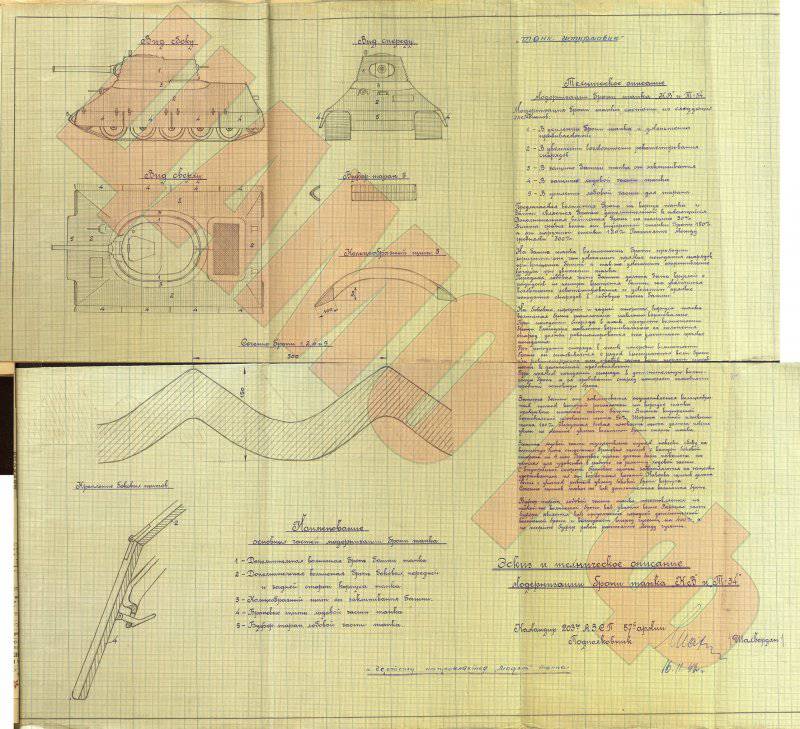Brongeoffr
Screening project tanks "KV" and T-34, proposed in November 1942 by the commander of 203 gas stations of the 57th Army, Lieutenant Colonel Shakhverdyan.
Technical description of the modernization of the armor of the tank "KV" and T-34.
Modernization of tank armor consists of the following elements:
1. In enhancing tank armor and reducing penetration.
2. In increasing the possibility of ricocheting shells.
3. In defense of the turret of the tank from jamming.
4. In the protection of the chassis.
5. In strengthening the frontal part of the ram.
The proposed wavy armor on the hull of the tank and the tower is optional and available. Additional wavy armor in thickness 30 mm. The height of the crest of the wave from the inner wall of the armor 150 mm, and from the outer wall 120 mm. The distance between the walls 300 mm.
On the turret of the tank, the armor undulation runs horizontally, which reduces the direct hits of projectiles when the turret rotates, and also reduces the air resistance when the tank moves. The front front part of the tower should be round with a radius from the center of rotation of the tower, which increases the possibility of rebounding and reduces direct hits of projectiles in the frontal part of the tower.
On the side, front and rear sides of the tank hull, wavy armor is inclined-vertically. When a projectile hits a tank, the armor will be wavy in length due to its oblique-vertical position, the projectile should ricochet, which reduces direct hits. When a projectile hits a tank of transversely wavy armor, it collides with a number of protruding armor waves or ricochets, or, having broken through part of the waves, loses its ability to penetrate further. With a direct hit of the projectile in an additional wavy armor and its penetration, the projectile will lose the ability to penetrate the main armor.
Protection of the tower from jamming is carried out by a ring-shaped shield, which is located on the tank hull, covering the lower part of the tower. The height of the inner vertical plane of the shield 50 mm. The width of the lower plane of the shield 100 mm. The outer lateral plane of the shield must have a slope not less than the slope of the wavy armor of the sides of the tank.
Protection of the undercarriage is carried out by hanging on the side of the wavy armor of individual armor shields on each side of 4 pcs. Armor shields must be hinged for ease of maintenance on running gear repair. From the inside, the armor plates are fastened with latches, which prevent them from swinging. Hinged shields should be with a slope equal to the slope of the side armor of the hull. The cross section of the shields is the same as that of the additional wavy armor.
The buffer-ram of the frontal part of the tank is made of the same wavy armor, as indicated above. The upper part of the buffer is a continuation of the front additional wavy armor and protrudes the tracks forward on 400 mm, and the width of the buffer is equal to the distance between the tracks.

Information